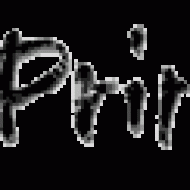 “You can’t learn much from a lawn,
“You can’t learn much from a lawn,but a garden has a whole world of wonders.”
Lawns started out as grazing areas around the manors of the landed gentry. Having a nice lawn around the house was a sign of power as you owned sufficient land to raise sheep and cow.
As the industrial revolution took hold and animals were less a sign of wealth, the lawn itself became the status symbol. You could indulge yourself in sparing land and time to recreational grounds.
As people moved to the cities so did the grass, on ever smaller plots. First lawns were cut by hand and later with the mechanical lawnmower, (an automated, resource depleting, pointless cow.)
The 20th Century saw an explosion of lawn making as commercial interests produced endless grass seed, fertiliser, pesticides, mowers, spreaders and irrigation equipment whilst developers discovered they could pass off cheap gardens by spreading 3 inches of soil over hard subsoil and laying turf on top.
Nowerdays, many lawns are rarely used and some are so covered with chemicals children have been permanently injured after walking barefoot on them.[1]
The modern pure grass lawn is artificial… you need effort and chemicals to maintain a monoculture.
- Misuse and the inherent toxicity of standard pesticides cause short and long term poisoning, cancer and disease in people and wildlife. [a]
- Extensive use and overuse of fertilisers (due to lack of restrictions) causes water pollution problems and wastes resources. [b]
- Endless summer irrigation to keep lawns green wastes massive amounts of water and depletes water tables. [c]
- Lawnmowers, strimmers and other lawn machinery unregulated for environmental emissions, use vast amounts of petrol and are a significant factor in urban air and noise pollution. [d]
The lawn is the worlds third agriculture. It is probable that westerners spend more person hours, energy and resources on their lawns than any agricultural resource of the third world.[8]
|
In the early 1990s in the United States
$ 25 billion a year was spent on lawn care products. Meanwhile 20 million acres were planted in residential lawns |
The lawn is a green desert. Adoption of a monoculture for a garden drastically reduces the habitats available for wildlife. Birds, bees, butterflies and other animals all begin to disappear. Often leaving an unstable ecosystem where common pest species seem to flourish.
Aside from keeping animals or ripping up the turf to plant trees and bushes, build vegetable beds, a pond or a greenhouse there are many things you can do to keep the same purpose of a lawn whilst adding diversity and removing chemical and mechanical dependence. (Unless the area you have is subject to heavy traffic and abuse, where turf is probably the most suitable thing to use.) If you just want somewhere to sit, try making a bench a focal point of your garden.
Lawns can be made more edible, medicinal, beautiful and nice smelling by adding low growing aromatic herbs and flowers. The plants below have been specially selected because they will tolerate at least infrequent mowings. For best results dont cut as often or as short as a normal lawn and try to lay off for at least 3 weeks in the summer to let the taller plants flower and set seed. You could try sowing them into small gaps in the grass or better still plant them out. For low maintenance choose plants that will like your local conditions.
